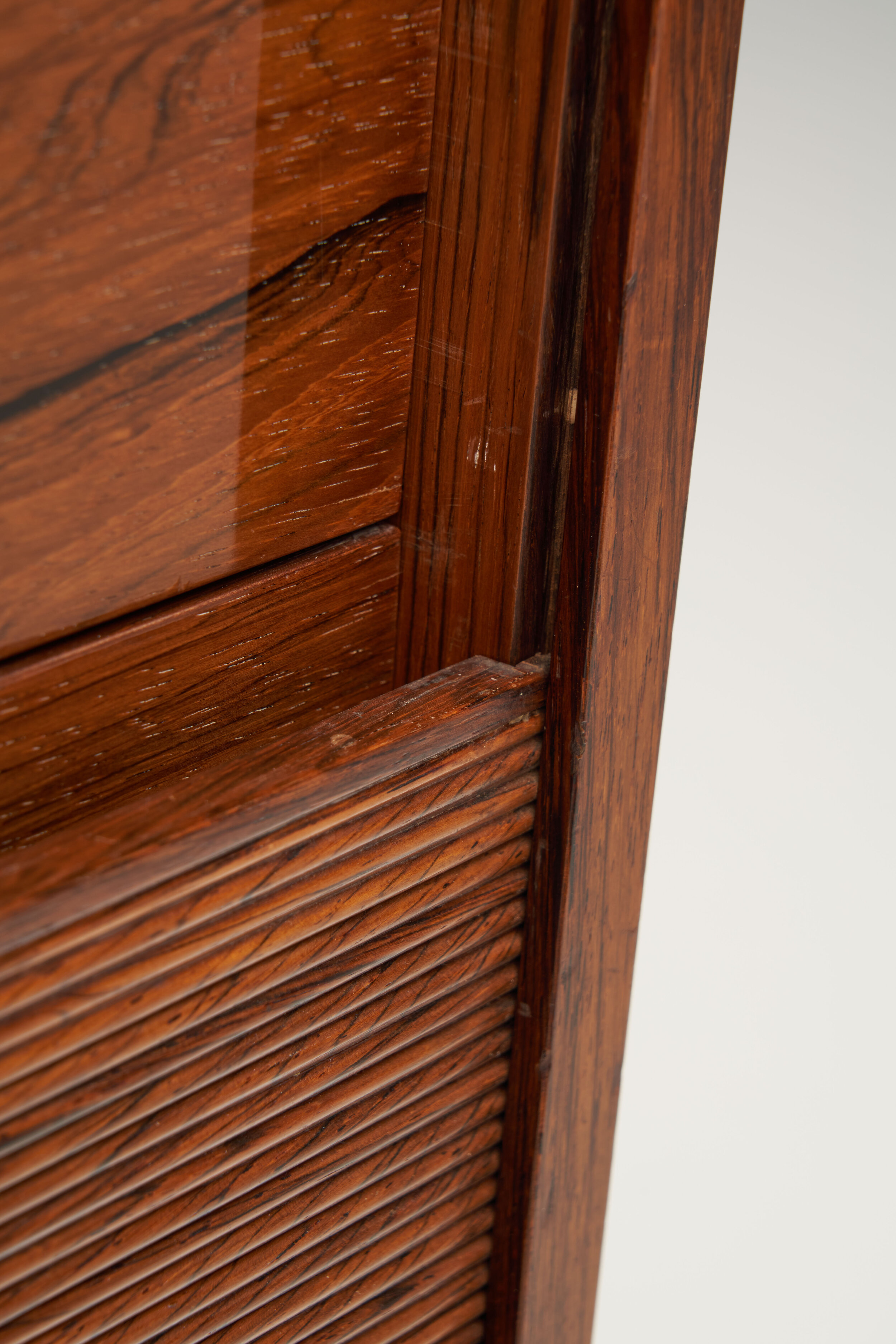Frits Henningsen Solid Wood Cabinet with Tambour Door, Denmark 1950s



















Frits Henningsen Solid Wood Cabinet with Tambour Door, Denmark 1950s
REQUEST PRICE HERE
Price category: 5,000 - 7,500 usd / eur
Classic design with expert craftsmanship. This how this cabinet and the Danish master cabinetmaker, Frits Henningsen could be best described. Unlike most cabinetmakers, Henningsen always designed his own furniture pieces, creating exclusively handmade pieces, like this cabinet.
This elegant deep cabinet is made of luxurious book mirrored wood. It has seven narrow drawers with small knobs, and a tambour door that covers the drawers when pulled up. The drawers are deep and narrow and provide more than a sufficient amount of storage space. The tapered legs are positioned on the edges of the cabinet, enhancing its refined look.
The execution and high attention to detail of this cabinet showcases Frits Henningsen's uncompromising craftsmanship and high-quality approach to furniture design. Henningsen's more functional design style developed from historically inspired, to simpler, timeless work that remains relevant to this day.
Condition:
In good vintage condition. Wear consistent with age and use. Item has some discolouration, small marks and scratches. One of the handles has a small chip.
Dimensions:
16.54 in W x 26.58 in D x 30.71 in H
42 cm W x 67.5 cm D x 78 cm H
About the designer:
Frits Henningsen (1889–1965) was a Danish furniture designer and master cabinetmaker (a term he preferred himself), who led a team of cabinetmakers in central Copenhagen. As an active member of the Cabinetmakers Guild from 1927, Henningsen became a major driver of the furniture exhibitions of the period, gaining recognition for the high-quality of his craftsmanship and his vibrant personality.
Many of Henningsen’s pieces were crafted in exotic woods such as palisander and mahogany. All his furniture was handmade in line with traditional, labour-intensive methods from the 19th century. His pieces are noted for their elegance, above all, for the soft curves in the arms of his chairs and sofas, demonstrating his traditional approach, aiming to combine style and comfort.
In 1942, Henningsen started distancing himself from the younger designers of the day who increasingly used straight lines in their work, believing furniture design needed to maintain curvature which contributed to a homely look. Unlike many other designers, Henningsen didn’t experiment with a wide range of different styles, instead went with his own distinctive style, creating a body of work that is instantly recognizable and much-loved. ~H.



